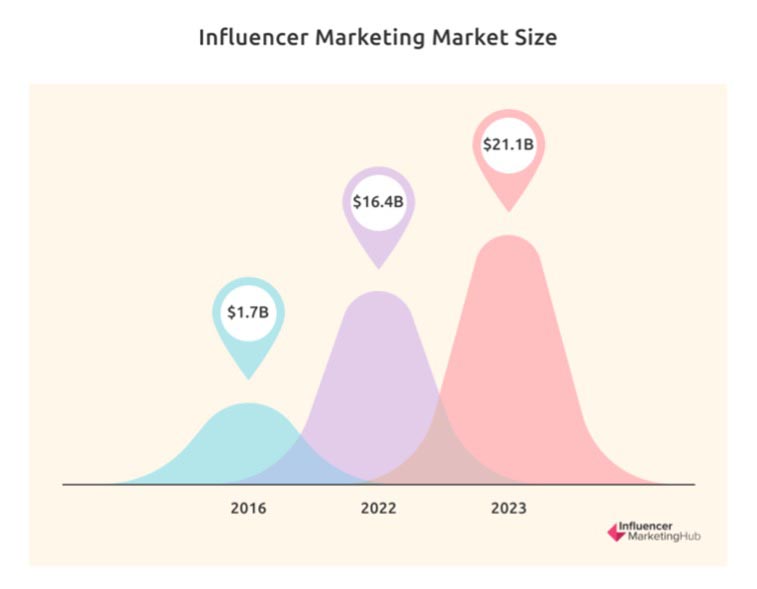Do you hear that buzzing? It’s probably someone talking about influencer marketing…again. Discussion of influencer marketing is everywhere, and when you look at the numbers, it’s easy to see why. According to “The State of Influencer Marketing 2023” from The Influencer Marketing Hub, the influencer marketing industry is set to reach a whopping $21.1 billion in 2023. Consider the following stats, as well:
- 63% of IMH’s survey respondents have standalone budgets for influencer marketing.
- 23% intend to spend more than 40% of their marketing budgets on influencer campaigns.
- 67% of those who budget for influencer marketing intend to increase their influencer marketing budgets over 2022.
As impressive as these numbers are, they are actually lower than some others. HubSpot, for example, reported that 82% of their survey respondents used content marketing in 2021, up from 70% in 2020. HubSpot also reported that 49% of respondents allocate between 30% and 50% of their budgets to content.
Influencer Marketing Is Not Just for Social Media
We know that influencer marketing is growing, but is it relevant to the printing industry? While we associate influencer marketing primarily with social media, that’s not always the case. There is a role for print to play. Not just because marketers want to put the faces of influencers on their marketing materials but because there is a role for print in reaching those influencers in the first place.

Before an influencer can learn about or promote a product, that influencer needs to try it. They need to hold the product in their hands and experience it. To do that, you need to get product samples and product literature (and perhaps even some branded swag to sweeten the deal) into a beautifully produced box and mailed it to them.
While many marketers may think of influencers as like Shaq or Kim Kardashian, some of the most powerful influencers actually operate on a smaller scale. They are local celebrities, niche Tik Tok personalities, or even vertical market industry experts. Influencers like these operating on a smaller scale are called “nano” or “micro” influencers, and they are typically easier to reach and build relationships with.
In fact, The Influencer Marketing Hub found that more marketers prefer to work with nano (39%) and micro (30%) influencers than they do the more expensive and harder to reach macro-influencers (19%) and celebrities (12%).

Influencer Marketing Is for Small Marketers, Too
You might think that, with numbers like these, most respondents to the IMH report were large and mid-sized companies. In fact, of the 3,500 agencies, brands, and PR firms surveyed, the bulk of respondents came from relatively small organizations, with 38% representing companies with fewer than ten employees. Even with respondents trending on the smaller side, the percentage of respondents with standalone budgets for content marketing (63%) has grown steadily every year, up from 61% last year, 59% in 2021, and 55% in the 2020 survey.
Introducing products and services to the influencers in your (or your clients’) market does more than just boost campaign results. It has longer term benefits, as well. The best influencer marketing kits will include all manner of commercial printing — packaging, commercial printing, labeling, and even swag — and thereby potentially exposes clients to new channels they can use in other areas of their marketing, as well.
So next time you hear someone talk about influencer marketing, don’t roll your eyes and move on by. Think about the influencers in your sphere and how you can tap into this as a powerful channel for your business — or your clients’ business. There just might be more opportunity than you think.
Click here to download the full survey.















Discussion
Only verified members can comment.